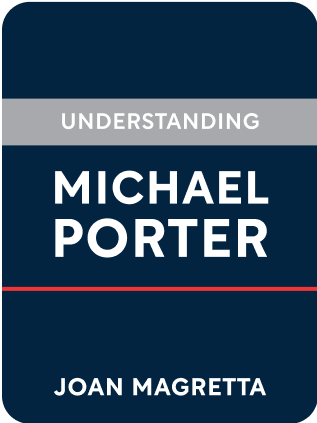

This article is an excerpt from the Shortform summary of "Understanding Michael Porter" by Joan Magretta. Shortform has the world's best summaries of books you should be reading.
Like this article? Sign up for a free trial here .
What is the threat of rivalry? What does it mean for your business strategy?
The threat of rivalry is the possibility for other companies to form and become rivals to your company. Using Competitive rivalry, Porter explains how businesses compete, and why.
The Threat of Rivalry: How Competition Works
Aim to be unique, not the “best.” Create unique value, don’t focus on just beating rivals. There is no “best” in any industry, just like there is no “best performance artist.” There are different buyer needs, and there can be multiple winners.
For example, McDonald’s is a winner in fast food and fast burgers. But In-N-Out deliberately focuses on slow burgers, with non-processed meat and fresher ingredients. Both are winners in their own right. They’re each playing their own sport, and are not truly a competitive rivalry, Porter claims.
Competition is about profits, not market share. There is no glory in growth if it’s profitless. Understanding the threat of rivalry will help you understand the true competitive forces out there.
The Five Forces
Why are some industries consistently more profitable than others? What makes information technology so stereotypically profitable, while airlines are a cutthroat, low-margin grind?
To see an industry holistically, consider Porter’s famous Five Forces. The Five Forces that matter in any industry are:
- Buyers
- Suppliers
- Substitutes
- Incumbents (competitive rivals)
- New entrants
The more powerful the force, the more pressure it will put on decreasing prices or increasing costs, or both. In this case, we’ll examine the threat of rivalry.
Force 4: The Threat of Rivalry
The threat of rivalry is when other businesses compete with you. Keep in mind that the threat of rivalry can take many forms.
What this is:
- Competition among you and your competitors
- Rivalry takes a variety of forms along the value chain: marketing, product features, new product introductions, customer service, pricing.
What it does:
- Lowers prices to attract customers away from competitors
- Increases costs, since incumbents compete on providing superior value
Scenarios in your advantage:
- High switching costs to competitors
- Low switching costs to you
- (Shortform example: Apple tries to make switching from Windows easier, while building a walled garden of products to make leaving harder)
Scenarios in your disadvantage:
- Fragmentation of industry
- A bevy of competitors all vying for market share will produce stronger competition. In contrast, an industry leader that’s big enough can enforce practices that help the entire industry.
- Low growth provokes battles over market share
- High exit barriers preventing companies from leaving the industry, thus keeping excess capacity around
- Failed airlines have airplanes that can be bought cheaply by an upstart
- Rivals irrationally committed to the business, outside of financial performance
- State-owned enterprises may exist for job creation and be subsidized by taxes.
- (Shortform example: Amazon seeks scale at the expense of profits, making it hard for any company that needs to produce a profit.)
- Competition based mostly on price. This can arise in these scenarios:
- Lack of differentiation between products, relying on price to attract customers
- High fixed costs and low marginal costs. This provokes the thinking that “any new customer will contribute to covering overhead,” thus encouraging lowering of prices.
- When capacity must be added in large increments, leading to price cutting to fill capacity
- When product is perishable. Not just food, but also unfilled hotel rooms and restaurant tables.
The threat of rivalry is one of the five forces, and helps you understand why some businesses thrive and others don’t. Keep in mind that some industries may have more competitions than others, and a higher threat of rivalry.

———End of Preview———
Like what you just read? Read the rest of the world's best summary of Joan Magretta's "Understanding Michael Porter" at Shortform .
Here's what you'll find in our full Understanding Michael Porter summary :
- How Porter's famous Five Forces help you analyze every industry
- How IKEA, Southwest Airlines, and Zara have ironclad, defensible strategies
- Why the best companies reject opportunities to focus on what they know






